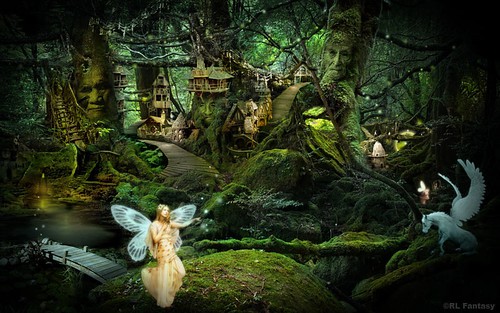Whether you’re a seasoned fantasy enthusiast or merely a curious reader, you’ll find a multitude of enchanting fantasy sub-genres, each offering a unique and immersive literary journey
Here are 7 sub-genres in the fantasy niche, along with brief explanations, examples, and the target audience they might appeal to. Here’s you chance to explore the fantastical landscapes, delve into mythical creatures, and find your perfect fantasy escape in these captivating sub-genres.

1. High Fantasy (Epic Fantasy)
High fantasy, also known as epic fantasy, is characterized by its grand scope and imaginative world-building. It often takes place in entirely fictional worlds with unique landscapes, creatures, and magical systems. High fantasy frequently revolves around quests and journeys undertaken by heroes or a group of characters to fulfill prophecies, defeat a dark lord, or save the world from an impending threat.
Target Audience: High fantasy appeals to readers who relish extensive world-building, intricate magical systems, and epic narratives with sweeping stakes.
Recommended Reading:
- “The Lord of the Rings” by J.R.R. Tolkien
- “A Song of Ice and Fire” by George R.R. Martin
- “Mistborn” series by Brandon Sanderson
- “The Wheel of Time” series by Robert Jordan
2. Urban Fantasy
Urban fantasy brings magical and fantastical elements into modern, urban settings, blurring the lines between the real world and the supernatural. It often features protagonists with magical abilities or supernatural beings living secretly among humans. Urban fantasy typically combines elements of mystery, action, and romance in a contemporary setting.
Target Audience: Urban fantasy is popular among readers who enjoy the juxtaposition of magical elements with familiar urban environments and modern-day themes.
Recommended Reading:
- “The Dresden Files” series by Jim Butcher.
- “The Mortal Instruments” series by Cassandra Clare.
- “The Rivers of London” series by Ben Aaronovitch.
- “The Mercy Thompson” series by Patricia Briggs.
3. Paranormal Fantasy
Paranormal fantasy revolves around supernatural creatures, mythological beings, and paranormal phenomena. It frequently explores themes of paranormal romance, mystery, and the struggle between good and evil. The genre often features protagonists and main characters who encounter or become entangled with the supernatural world and supernatural abilities. This fantasy sub-genre often appeals to the young adult reader.
Target Audience: Paranormal fantasy is well-suited for readers seeking tales of romance, mystery, and thrilling encounters with mythical creatures.
Recommended Reading:
- “Twilight” series by Stephenie Meyer.
- “Sookie Stackhouse” series by Charlaine Harris.
- “Vampire Academy” series by Richelle Mead.
- “The Hollows” series by Kim Harrison.
4. Historical Fantasy
Historical fantasy merges fantasy elements with historical settings, providing readers with an imaginative twist on real historical events. It might involve legendary creatures, magic intertwined with historical figures, or mythical elements blended with accurate historical details.
Target Audience: Historical fantasy attracts readers who appreciate both historical accuracy and the wonder of magical elements set against real historical backdrops. If you’re a fan of historical fiction, this is likely a good fit for you.
Recommended Reading:
- “Jonathan Strange & Mr. Norrell” by Susanna Clarke.
- “Outlander” series by Diana Gabaldon
- “The Golem and the Jinni” by Helene Wecker.
- “The Priority of the Orange Tree” by Samantha Shannon.
5. Sword and Sorcery
Sword and sorcery stories are centered around action-packed adventures, often featuring sword-wielding heroes, sorcerers, and mythical creatures. The genre emphasizes personal quests, daring exploits, and thrilling battles, making it an engaging and fast-paced sub-genre. Other themes within this sub-genre include an elaborate fictional world and portal fantasy.
Target Audience: Sword and sorcery appeals to readers who love action, daring escapades, and morally complex characters navigating a perilous world. If you’re fan of action movies, this sub-genre will likely appeal to you.
Recommended Reading:
- “Conan the Barbarian” series by Robert E. Howard.
- “The Witcher” series by Andrzej Sapkowski
- “The Lies of Locke Lamora” by Scott Lynch.
- “The Black Company” series by Glen Cook.
6. Steampunk Realism
Steampunk fantasy blends elements of the Victorian era, industrial revolution, and advanced steam-powered technology with imaginative and futuristic concepts. The genre often explores a world where steam-driven machinery and clockwork inventions coexist, creating a unique aesthetic and adventurous atmosphere.
Steampunk fantasy attracts readers who enjoy the fusion of historical settings, intricate machinery, and fantastical adventures.
Recommended Reading:
- “Leviathan” trilogy by Scott Westerfeld.
- “Perdido Street Station” by China Mieville
- “The Infernal Devices” series by Cassandra Clare.
- “The Aeronaut’s Windlass” by Jim Butcher.
7. Magical Realism
Magical realism infuses magical or fantasy elements into everyday, real and modern world settings. It often explores the mystical and surreal aspects of ordinary life, challenging the boundaries between reality and the supernatural. Magical realism weaves enchanting stories that incorporate fantastical occurrences as a natural part of the narrative. It can pull in elements of political structures, science fantasy, advanced technology, and romantic relationships.
Target Audience: Magical realism appeals to readers who appreciate thought-provoking tales that explore the extraordinary within the ordinary.
Recommended Reading:
- “One Hundred Years of Solitude” by Gabriel Garcia Marquez.
- “The Night Circus” by Erin Morgenstern.
- “The Ocean at the End of the Lane” by Neil Gaiman.
- “Like Water for Chocolate” by Laura Esquivel.
These are just a few of the sub-genres with the fantasy niche genre. You’ll find a rich and diverse tapestry of storytelling, catering to a wide range of preferences and interests. From grand epics to urban mysteries, historical adventures to speculative fiction, from heroic fantasy to contemporary magical experiences, fantasy continues to captivate readers with its boundless imagination and captivating narratives.
We’ll update this list with more fantasy sub-genres in the near future.
- French Cuisine: 10 Classic French Dishes & The People Behind Them - July 8, 2024
- 12 Ways to Overcome Your Reading Slump: Strategies to Read More - March 7, 2024
- 15 Unusual Halloween Traditions from Around the world - October 13, 2023